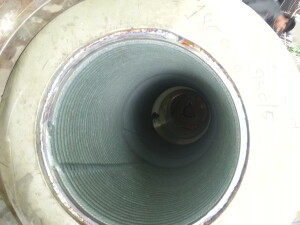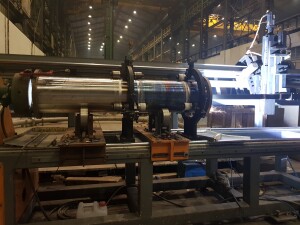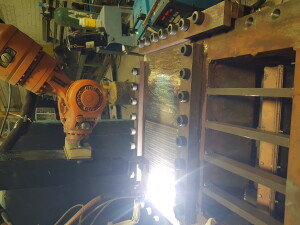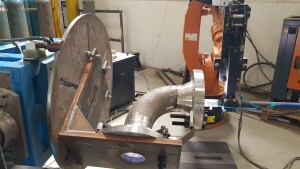Plasma arc welding (PAW) is an arc welding process similar to gas tungsten arc welding (GTAW). The electric arc is formed between an electrode (which is usually but not always made of sintered tungsten) and the work piece. The key difference from GTAW is that in PAW, by positioning the electrode within the body of the torch, the plasma arc can be separated from the shielding gas envelope. The plasma is then forced through a fine-bore copper nozzle which constricts the arc and the plasma exits the orifice at high velocities (approaching the speed of sound) and a temperature approaching 28,000 °C (50,000 °F) or higher. Arc plasma is the temporary state of a gas. The gas gets ionized after the passage of electric current through it and it becomes a conductor of electricity. In an ionized state, atoms break into electrons(-) and ions(+) and the system contains a mixture of ions, electrons, and highly excited atoms. The degree of ionization may be between 1% and greater than 100% i.e.; double and triple degrees of ionization. Such states exist as more electrons are pulled from their orbits.
The energy of the plasma jet and thus the temperature is dependent upon the electrical power employed to create arc plasma. A typical value of temperature obtained in a plasma jet torch may be of the order of 50000 °F (28000 °C) against about 10000 °F (5500 °C) in an ordinary electric welding arc. Actually, all welding arcs are (partially ionized) plasmas, but the one in plasma arc welding is a constricted arc plasma.
Plasma arc welding is an arc welding process wherein coalescence is produced by the heat obtained from a constricted arc setup between a tungsten/alloy tungsten electrode and the water-cooled (constricting) nozzle (non-transferred arc) or between a tungsten/alloy tungsten electrode and the job (transferred arc). The process employs two inert gases, one forms the arc plasma and the second shields the arc plasma. Filler metal may or may not be added.

PTA cladding on separated can

PTA Cladding Setup

PTA Cladding on plate

PTA cladding in Elbow




